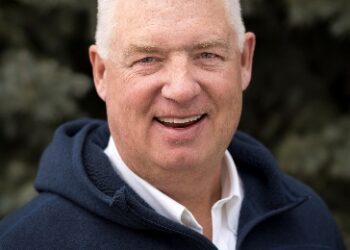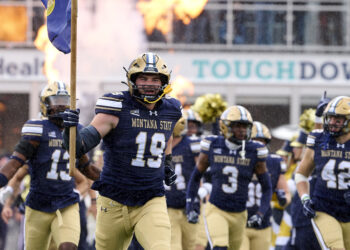Using radioactive isotopes to study glacial thinning
By Emily Wolfe Explore Big Sky Contributor
Natalie Kehrwald thought she was making a mistake. As a Ph.D. student at Ohio State University in 2008, she had just returned from a 10-week expedition collecting ice cores from a glacier at 20,000 feet in Tibet.
To date the ice, Kehrwald was looking for layers of radioactive isotopes present in glaciers worldwide, deposited during Soviet nuclear testing between 1962 and 1963, and U.S. testing from 1952 to 1958.
“If you find those, you have an exact date and an idea of how much snow and ice has accumulated over top of that,” she said.
But Kehrwald couldn’t find the isotopes.
So she analyzed a parallel core, but again didn’t see either radioactive peak. Alongside a colleague, she performed additional tests with the same results. Finally, they used a different test on the uppermost ice and found it dated from the 1940s, meaning any accumulation from then on had melted.
This was the first time anyone had proven glaciers thin from the top down at such high elevations in the Himalaya, and it had massive implications. The range’s glaciers provide freshwater for up to two billion people, and Kehrwald says they’re melting due to increased temperatures and changing precipitation patterns.
By working with Adventurers and Scientists for Conservation athletes to collect samples from ranges around the world, Kehrwald – who is now a research scientist at the University of Venice in Italy – is able to learn more about the breadth of this issue.
Q&A with Dr. Natalie Kehrwald
Adventurers and Scientists for Conservation: Tell me more about your research.
Natalie Kehrwald: [Besides glacial thinning,] I also study interactions between fires and climate. I’m looking for correlations between humans arriving in a place and increased fire activity, or if fire activity is more driven by changes in climate.
Specifically, I look at different traces of past biomass burning in ice cores. Fires can put up to half as much carbon dioxide into the atmosphere as fossil fuels… Even so, we don’t know how they affect atmospheric heating.
ASC: Wildfires or cooking fires?
N.K.: Historically, it was mostly wildfires, but in the present day, cooking fires are a bigger part of the total. Fires [create] a huge carbon dioxide influx into the atmosphere, where the net sum equals half as much as fossil fuels.
ASC: Which era are you looking at?
N.K.: The past 10,000 years. That period is exciting, because [the Earth had] just come out of the last ice age into a climate similar to what we have now. It’s also a time when humans have been really active – traveling around the world, starting agriculture, doing slash and burn techniques, and moving to locations that were previously unoccupied.
ASC: Where have you collected samples?
N.K.: Most recently I’ve been to the [Italian] Dolomites … I’ve also been to Central Greenland; the west Antarctic ice sheet; the central Himalayas in Tibet; and to the Cordillera Blanca in Peru.
ASC: How do you get equipment to a glacier at 20,000 feet, and then bring samples home?
N.K.: We drive until we can’t drive anymore, and then bring it up with animals – yaks in [the] Himalayas and donkeys in South America. We build a base camp on the glacier, and do multiple hikes for tents and equipment and food, acclimatizing really slowly. We [drill] four parallel cores to bedrock, and store them in pieces in a trench of snow.
Bringing everything down is difficult. If the samples melt, or if someone stumbles and breaks one, you lose all the information. We have a freezer truck, but the freezers don’t work at elevation, so we hook up oxygen tanks to the freezer component and drive as fast as we can for three days across places where there aren’t always roads to get to a commercial freezer. Then we ship it on a cold bed flight back to the U.S.
ASC: How have ASC athletes helped your work?
N.K.: That type of glacial thinning is hard to see with satellites. You need to go by foot to get actual glacier samples, which is why I’m really excited about ASC. People are going to great locations and can get samples.
ASC: What is the protocol for the adventurers?
N.K.: They’re filling eight to 15 Nalgene bottles, ideally going two meters below the surface by digging a pit or going down in a crevasse. The techniques are super easy.
Emily Wolfe is the marketing and outreach manager for Adventurers and Scientists for Conservation, a Bozeman-based nonprofit that mobilizes outdoor enthusiasts to collect and disseminate environmental data, catalyzing conservation initiatives worldwide.













